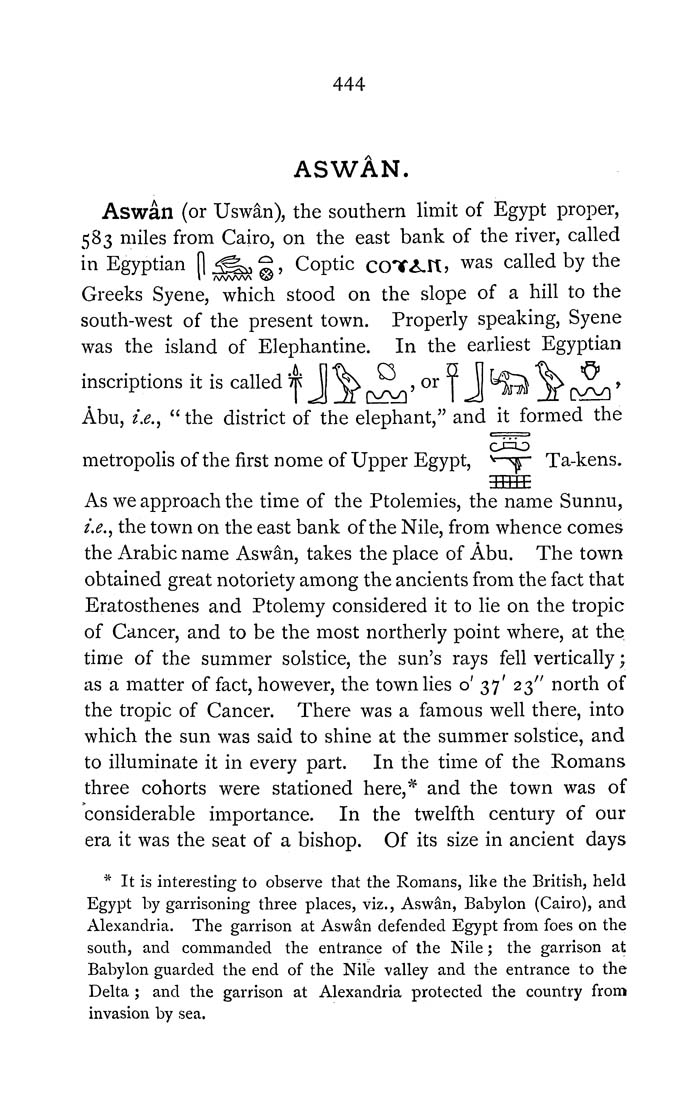444
aswAn.
Aswan (or Uswan), the southern limit of Egypt proper,
583 miles from Cairo, on the east bank of the river, called
in Egyptian P^^g, Coptic COT^-Hj was called by the
Greeks Syene, which stood on the slope of a hill to the
south-west of the present town. Properly speaking, Syene
was the island of Elephandne. In the earliest Egyptian
inscripdons it is called fJ^^.^r^J^^^,
Abu, i.e., " the district of the elephant," and it formed the
ci=io
metropolis ofthe first nome of Upper Egypt, ^^-y Ta-kens.
As we approach the time of the Ptolemies, the name Sunnu,
i.e., the town on the east bank ofthe Nile, from whence comes
the Arabic name Aswan, takes the place of Abu. The town
obtained great notoriety among the ancients from the fact that
Eratosthenes and Ptolemy considered it to lie on the tropic
of Cancer, and to be the most northerly point where, at the
time of the summer solstice, the sun's rays fell vertically;
as a matter of fact, however, the town lies o' 37' 23" north of
the tropic of Cancer. There was a famous well there, into
which the sun was said to shine at the summer solstice, and
to illuminate it in every part. In the time of the Romans
three cohorts were stationed here,^ and the town was of
considerable importance. In the twelfth century of our
era it was the seat of a bishop. Of its size in ancient days
* It is interesting to observe that the Romans, like the British, held
Egypt by garrisoning three places, viz., Aswan, Babylon (Cairo), and
Alexandria. The garrison at Aswan defended Egypt from foes on the
south, and commanded the entrance of the Nile; the garrison at
Babylon guarded the end of the Nile valley and the entrance to the
Delta ; and the garrison at Alexandria protected the country from
invasion by sea.
|








